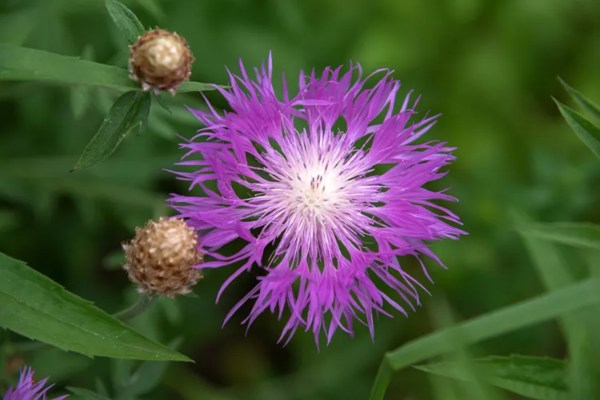Basket flowers have a deep and fascinating history that dates back centuries and continents. These plants were first documented during the 18th and 19th centuries by European explorers and botanists as they cataloged the flora of the New World. In the early 19th century, the plant received the botanical name Centaurea Americana, showing its geographic origin and membership in the huge Centaurea genus, including other well-known species like the cornflower (Centaurea cyanus).
As botanical gardens and private European collectors were seeking new plants, the Basket flower became known to these gardens in the mid-19th century. It became even more popular in Victorian-era gardens because of its striking blooms and ease of cultivation. It is greatly admired for its unique aesthetic and is a great pollinator attraction. Gradually, its popularity spread to other parts of the world, including Australia and New Zealand where people started growing them in gardens.
What are basket flowers?
The basket flower or the American basket flower is an annual wildflower that got its name after its distinct basketweave pattern of its modified leaves surrounding the flower head base. The plant produces showy flowers that have fringy pinkish-purple petals. This wildflower loves full sun, well-drained and slightly acidic soil. It grows well in warm, dry regions with temperatures ranging between 30 to 100 degrees Fahrenheit.
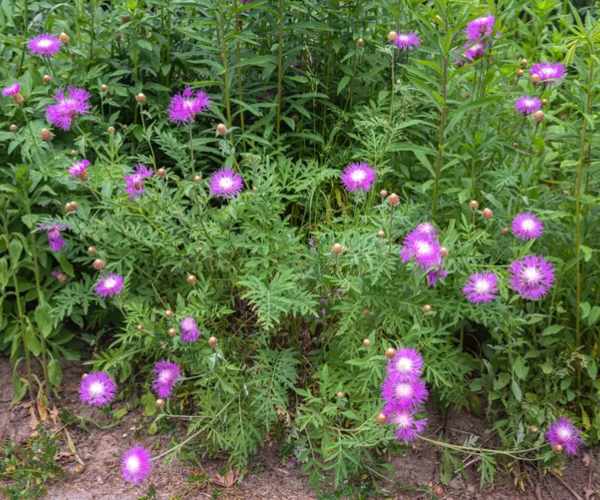
- Common Name: Basket flower, basket-flower, American basket flower, American starthistle
- Botanical Name: Centaurea americana
- Family: Asteraceae
- Plant Type: Annual, herb
- Mature Size: 2-5 ft. tall, 2-3 ft. wide
- Sun Exposure: Full
- Soil Type: Sandy, loamy, clay
- Soil pH: Acid, neutral
- Bloom Time: Spring, summer
- Flower Color: Pink, purple, white
- Hardiness Zones: 3-9 (USDA)
- Native Area: North America
Also, Read Embrace the Beauty of Spring: 10 Stunning Spring Flowers to Plant Now
How to care for basket flowers?
Here are some of the main care requirements that you should know for growing basket flowers.
Light
This plant likes bright, unfiltered light at its best. The more the light, the better the plant functions. Southern or western exposures are often the best.
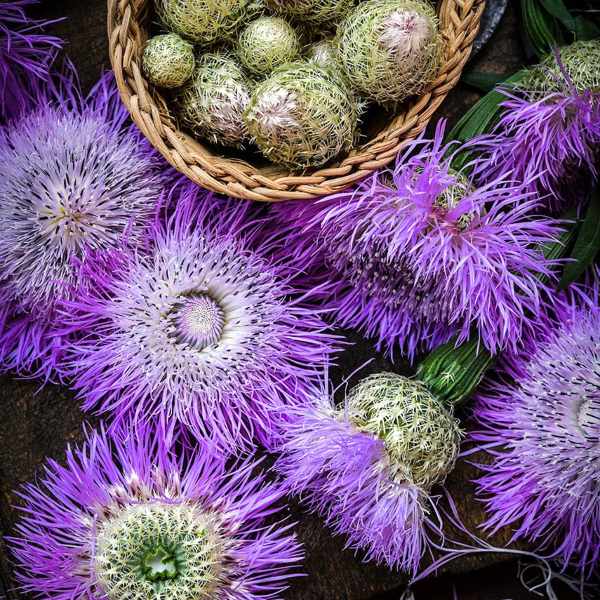
Growing basket flowers in pots and containers are best for flexibility in positioning. Keep the pots in a bright, sunny location like a patio, deck, or balcony. If the natural light is not enough, use grow lights to provide the necessary light intensity. Keep the lights about 12-16 inches above the basket flowers and provide 12-16 hours of light per day.
Soil
Basket flowers can grow in a wide range of soil types, including sandy, loamy, and clay. The only requirement is that the soil needs to be well-draining. They are too fussy about pH levels too. Having said that, slightly acidic to neutral level seems to be the best for better growth.
Water
If you live in a dry region, consider planting basket flowers. Once established, they become drought-tolerant and survive well in dry conditions. However, they need adequate moisture during the spring that promotes better growth.
Keep checking soil moisture regularly to determine when to water. Dig your finger into the soil up to about an inch. If the soil feels dry, it is time to water to plant.
During the seedling stage water every day or every other day to keep the soil moist at all times but do not overwater. While watering, make sure you’re doing it at the base of the plant to ensure moisture reaches the root zone.
Temperature and Humidity
Since they are drought tolerant, it is not surprising that basket flowers love Mediterranean-style climates. These versatile plants can cope with temperatures (around 65 degrees Fahrenheit) and hot, humid subtropic weather.
Fertilizer
We recommend adding compost or organic fertilizer during the spring so that you will get the most impressive blooms and prolific growth.
If you’re preparing a new bed in pre-planting, mix the balanced fertilizer into the soil at a rate that is recommended on the package, normally around 1 to 2 pounds per 100 square feet. You can top-dress with a balanced fertilizer during the growing season.
Types of Basket Flower
There are seeds available commercially of basket flower cultivars:
- ‘Aloha Blanca’: This type of basket flower produces unusually large white flowers reaching 5 to 6 inches in diameter.
- ‘Aloha Rosa’: This cultivar blooms with a smoky pink or deeper lavender shade and the inner petals sometimes have eye-catching black tips.
How to grow basket flowers from seed
Basket flowers need to grow from seed since they are annuals. It is an easy process and they don’t need a stratification period. Follow these steps:
- Collect seeds once they are fully formed and can be easily removed from dried flower heads.
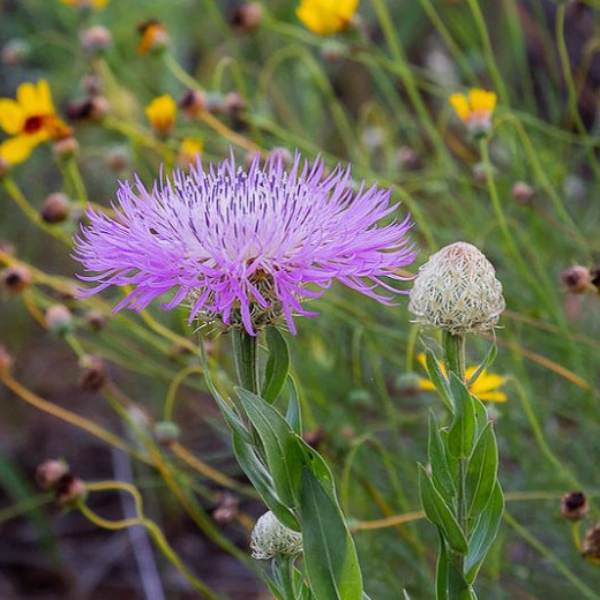
- Sow these seeds in small containers for a couple of months before transferring them to their outer location. Alternatively, you can also directly sow them outdoors after the chance of frost is over. However, do not plant them too deeply in pots or outdoors.
- The soil must be moist but not saturated.
- The seeds will germinate from one to three weeks to germinate.
Common pests and plant diseases
Like cornflower, the basket flower may see minimal if any problems, much like other flowers in the Centaurea genus. Insects like aphids may make a home on the flowers—however, a safe DIY spray is needed to eliminate the pests. Fungal problems like powdery mildew often happen in wet conditions. You can prevent this fungal problem by spacing the plants in the ground. Fungicides, or DIY solutions involving baking soda, may help.
How to Get Basket Flower to Bloom
Bloom Months
The blooms can happen anytime from May to August but normally happen around May or June.
What do basket flowers look and smell like?
These annual wildflowers are reseeding and are similar to thistles but without the prickly texture. However, they have quite large pink-purple petals with creamy centers. The flower has a rare sweet and honey fragrance.
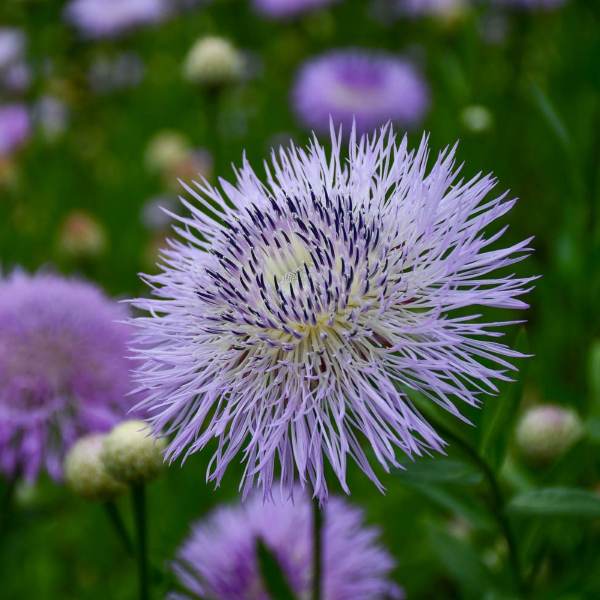
Deadheading basket flowers
If you want your basket flower plant to have the most impressive growth in terms of branches and blooms, pinching off developing tips and deadheading spent flowers.
How to prune basket flowers?
Use a pair of sharp scissors or pruning shears to cut off the flower stem right above the next set of leaves or buds. Deadhead as soon as the flowers start to fade.
Once the plants grow about 6 inches tall, pinch off the growing tips of the main stems. Pinching back baby plants will encourage bushier growth and more blooms.
Inspect your plants regularly for any damaged, diseased, or dead leaves and stems. Use a pair of sharp scissors or pruning shears to cut off any affected areas.
How to choose a container for basket flowers?
Choose a pot that is 12 inches in diameter and 12 inches deep. This pot size will provide enough space for the roots to grow and support the plant’s height.
Choose a clay or terracotta pot for your basket flowers as they are great for allowing the soil to breathe and help prevent waterlogging. You can also use plastic or resin containers that have good drainage holes.
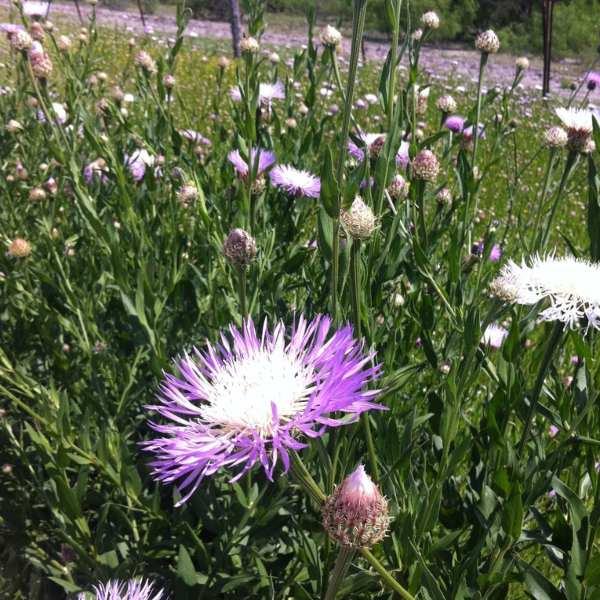
FAQs
Q: Can basket flowers grow in the shade?
A: While they love full sun, Basket Flowers can tolerate partial shade, though it may result in fewer blooms.
Q: Can we use basket flowers in floral arrangements?
A: Yes, basket flowers make excellent additions to floral arrangements due to their large, striking blooms and long stems.
Q: What are some companion plants for basket flowers?
A: Good companion plants for basket flowers include other sun-loving, drought-tolerant species such as coneflowers, black-eyed Susans, and cosmos.
Q: Are basket plants invasive?
A: Basket flowers are not considered invasive but they readily self-seed. They can take over small garden spaces but they can also easily be pulled out.
Also, Read All You Need To Know About Polka Dot Plants: Growth, Care, Tips, and More
